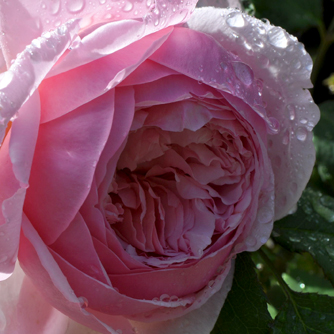Roses
BackRoses are the queen of flowers with their stunning blooms and, if you choose wisely, intoxicating perfume. Whilst some people imagine roses need a lot of care and chemicals the reality is you can grow beautiful organic roses very easily. Get the basics right and the flowers will just keep coming!
Plant selection
All roses look great on their label yet many are terrible performers needing constant care to survive. There are also roses which perform well in some climates but poorly in others so it’s important you choose strong vigorous varieties which suit your area.
Heritage roses which were bred years ago before the reliance on chemicals have stood the test of time and are a good place to start when selecting plants. Try starting your hunt for a heritage rose on the Heritage Roses NZ website. Their mission is to nurture a love of the beautiful roses of the past, plus they have a great “rose register” which records old roses brought to New Zealand and where to find, visit & buy them.
Location, Location, Location!
Roses need sun so plant them where they’ll get at least 6 hours of direct sunlight. Less sun means less flowers and more disease problems.
Roses will grow in a wide range of soils but do best in rich fertile soils that don’t get waterlogged. If your soil is a bit lacking then dig in plenty of manures and compost to beef it up. Apply eco-flo gypsum to heavy soils to break up clay and improve the drainage before planting.
Fertilising Roses
Roses are hungry plants. Feed them every two months with manure, compost or a Certified Organic fertiliser. Don’t fertilise in winter when plants are dormant and are needing a rest period.
Pruning Roses
Winter Prune
Most modern roses (called hybrid teas) are pruned hard in winter to stimulate new spring growth and more flowers. Whilst rose pruning might seem daunting it’s actually pretty straightforward.
• Used clean and sharp secateurs
• Cut out all dead and damaged wood
• Cut approximately 1cm above a bud on a 45 degree angle
• Cut vigorous bushes back by two thirds
• Cut less vigorous bushed back by only one third
• Spray pruned bushes with an organically certified insecticide, spraying oil and/or fungicide to clean up any pests and diseases
Of course there are more things you can do but honestly the above steps are good enough 90% of the time.
If you’re growing heritage bush roses or David Austin’s these usually don’t require such a hard prune as they naturally develop into nicely shaped shrubs. Instead the winter prune involves only removing 10-20% of growth all over the plant. Then remove any dead or damaged wood and you’re done!
There are some roses which only flower once a year in spring, like banksia roses. These should not be pruned in winter but after flowering finishes in spring.
Post Bloom Prune
Cut back finished flower stems by 15-20cm to keep bushes tidy and to encourage another big flush 6-8 weeks later.
Weeds around Roses
Roses are very sensitive to herbicides containing glyphosate (eg Roundup) and exposure to the chemical results in severely stunted/distorted growth. Exposure can come from drift when spraying or residue in the soil being taken up by the roots.
Instead mulch around the plants to deter weeds and hand weed or spray with an organically certified weed killer.








